Feed aggregator
Canadian Centre for International Studies and Co-operation...

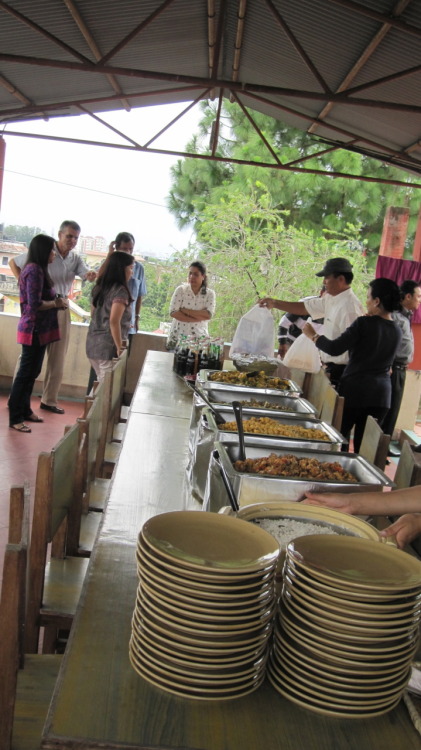
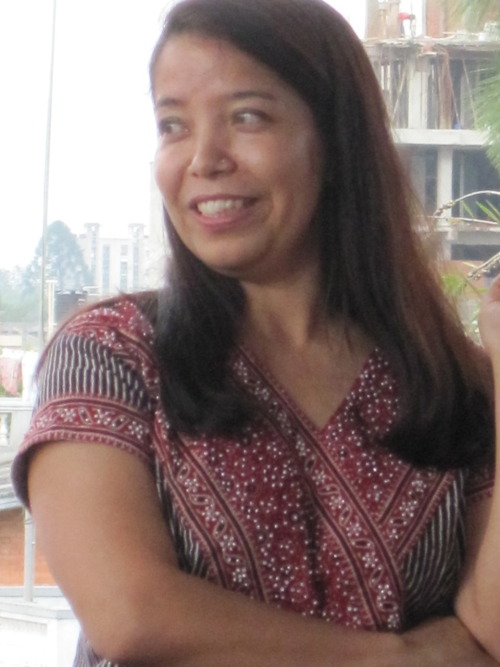
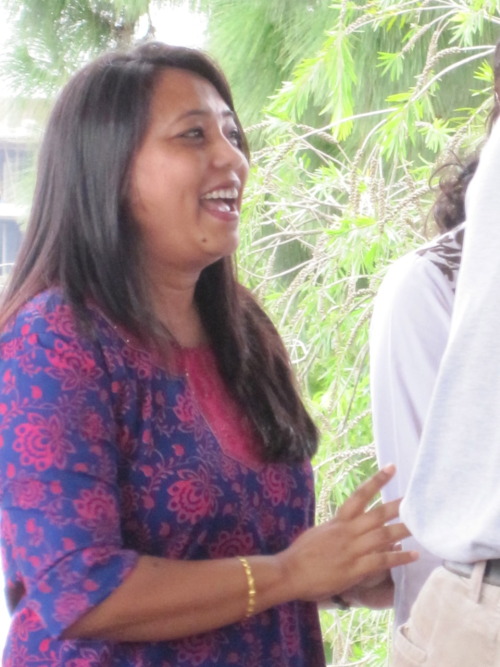
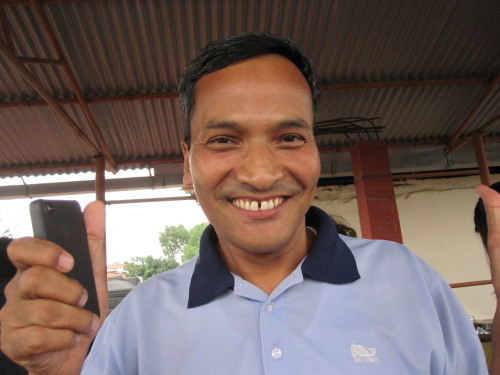

Canadian Centre for International Studies and Co-operation (CECI) held a lunch honouring its staff. Here are some of my CECI friends. Thank you CECI Nepal!
A day in the life at the Center for Micro Finance in Nepal. Meet...

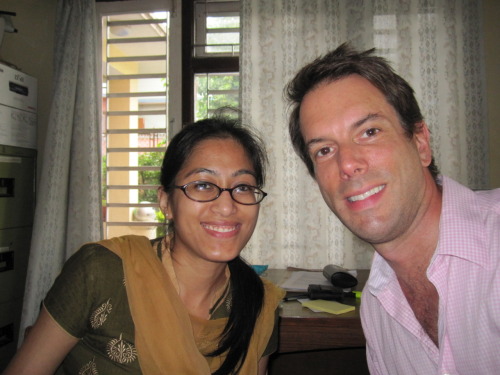

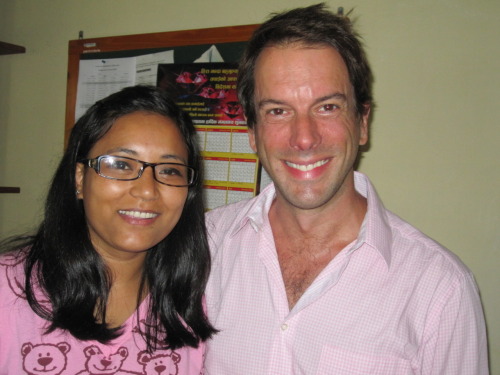
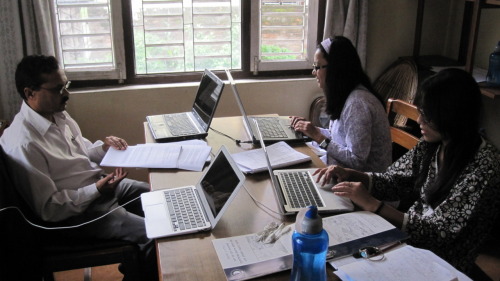
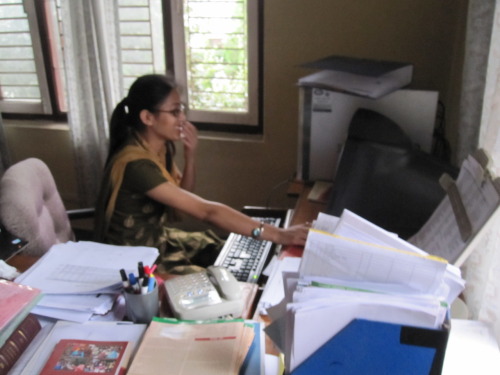
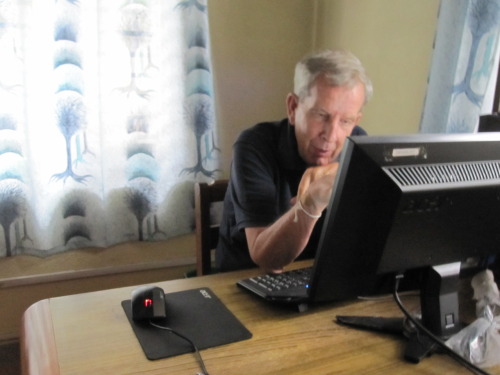
A day in the life at the Center for Micro Finance in Nepal. Meet my amazing team! Shiva Hari Devkota, Senior Microfinance Trainer, Mimu Raghubanshi, Program Officer, and Samita Maharjan, Program Assistant… Awesome group of Micro Finance Trainers.
This educational video provides one lesson about the Management...
This educational video provides one lesson about the Management of Micro Finance Institutions. We introduce you to some of the basic terms and concepts of Financial Management. In this first lesson we begin by providing some definitions and outline five sources of funds; second, we explain four uses of funds; third, we describe four methods for managing risk; and fourth, we offer suggestions for greater profitability.
Houston, we’ve got a problem!
So I ventured out on the weekend to see Hanoi, in scorching hot weather. On Saturday, it was 37 degrees + 94% humidity = 50 degrees Celsius!! Sunday felt even hotter!
I managed to survive the hot and humid weather, but regrettably, my “el cheapo” Nikkor kit lens did not! Yes, I know, you’re all going “oh no,” knowing my “relationship” (yes, I use that term deliberately), with my camera. This could not have happened at a worse time! I’m on a once-in-a-life-time trip, in a beautiful country, and my lens bites the dust. The 18-70mm lens, for those of you who care to know, is jammed and stuck on 24mm. I do have my pro lens with me, you know, the one I can use for self-defense if I ever had to, and Nikon’s pro equipment have not let me down thus far. So, perhaps, if my lovely wife is reading this blog post, she is thinking that perhaps Kian should buy that really nice lens he’s been drooling over for so long… after all, she is so understanding! (nudge, nudge, wink, wink!) Yes, surprisingly, I am taking it better than I thought I would. Thank you for asking!
Venturing out on Saturday, I came across blocked roads, and the Vietnamese riot police out in full gear. Yes, never a dull moment here… As it turns out, there has been a dispute between Vietnam and China over Chinese naval operations in the South China Sea. A protest was expected and the Chinese Embassy in Hanoi was sealed off, causing traffic chaos. For those of you curious about this development, between the two countries, you can read about it here: http://www.bbc.co.uk/news/world-asia-pacific-13661779
Saturday and Sunday I finally jumped in with two feet and rode on a scooter like 90% of the Vietnamese do. It was a great way to see the city, and keep cool in 50-degree weather. As I write this, I have a mosquito in my room that has bitten me at least 3 times, and for the life of me I can’t find it to give it a taste of his own medicine! I have one light turned on in my room to attract it to a corner of the room, but it seems too smart for that and is not falling for my trap.
Thanks to my translator, I got to see some of the most interesting sites in Hanoi over the weekend, such as, the Ho Chi Minh Mausoleum. This is the site of the large memorial for Ho Chi Minh (Uncle Ho), where he read the Declaration of Independence. He is revered in Vietnam. So we got here to line up to go in, and, there were over a thousand people lined up to go in! And I thought having 10 people in front of me at Tim Horton’s was bad enough! We could not even get to the grounds around the building. But my wise translator from the College, who is now also a good friend, managed to convince the guards to let us through the gate, and we managed to make our way to the perimeter area.
We also went to Hoan Kiem Lake, a beautiful and popular place to visit in the center of the city, to the One Pillar Pagoda, one of the two most revered and iconic Buddhist temples. We walked outside the Presidential Palace, visited the Temple of Literature, the first University to be built in Vietnam, and last but not least, the Ethnology Museum, where you learn about various ethnic tribes of Vietnam. Of course, there was some shopping, a chat about work over ice cream and the most amazing tasting iced-coffee, while overlooking the lake. I should also mention that two very sweet girls joined us for our tour, the daughter of one of the Department heads at the College and her friend, and they took us to the best and cheapest places to eat, and we had plenty of opportunities to practice our English! I was impressed by how well these two young ladies spoke English and both of them will soon be off to England to attend University.
Enough words…here are some scenes from the weekend:
Click to view slideshow.Some Reflections on Life in Vietnam…
…as a Trainer
I have been meeting with a number of people such as deans and faculty over the last few days. Discussion and training vary from topics on marketing strategy, the 7P’s of marketing, service quality management, curriculum for marketing and hospitality programs, and best practices in education, and the list goes on. It is amazing how much my work at the University and academic training has prepared me for this mandate, and I feel that I am making some valuable contributions here. Having said that, I am convinced I am learning as much, if not more, about the Vietnamese culture and norms, business and marketing, and life in Vietnam in general.
I must also say how impressed I am with the dedication of the people here , especially those whom I meet with at the College, in wanting to make a difference and their desire to help educate the Vietnamese population. I find people whom I have come across incredibly caring and hospitable, honest, hard working, and always happy to provide insights and a helping hand. Of course, I have also had my share of issues, for example, a cab driver who wanted to charge me 14 times the actual fair, a pickpocket (who, regrettably for him, was unsuccessful in getting my wallet), and other much smaller issues like a 3″ cockroach trying to chase me down in my hotel room (unsuccessfully and we’ll leave it at that), and tiny tiny ants in everything from my kettle, to my iron, and even my pill box. How they manage to get in the latter is beyond me as it is closed tightly. Of course, these things are to be expected when travelling to other countries. I had my wallet snatched in Germany a few years ago (and I am not careless with my wallet), but I have learned that it is best to be vigilant about these things no matter where you travel. Having said that, all of the positive experiences and the interactions with the wonderful people in Vietnam far outweigh the few inconveniences. I must also extend a special thanks to the representatives of WUSC (World University Service of Canada) in Hanoi, who have been wonderful hosts and have gone out of their way to make sure I have a smooth transition and a positive experience, and helped me to manage the nuances of the Vietnamese culture when needed. You know who you are…
…as a Photographer
I am absolutely fascinated by the visual stimuli in Vietnam. As a photographer, I am always looking for images that convey something about who people are, what they do, and something about their life to provide context to my images. I am in awe because although I have not had much time to photograph here thus far (that is about to change, I can promise you that!), nevertheless, I continue to see hundreds, if not thousands of images a day in my mind’s eye. I am referring to the thousands of commuters I see every day on my 40-60 minute taxi ride to the College. You can virtually peer into people’s lives as they go about their day. Because most ride on scooters as opposed to cars, you can readily capture a snapshot of people’s lives, and who they are, what they do, etc. For instance, you see kids that just attended a birthday party because there are several huge balloons tied to the scooter, you can see who is expecting a baby in a few short months, who recently had a baby ( I saw a mother driving a scooter with a sleeping 6-month old baby in one arm, and you guessed it, with no helmets!), you can see who works in a professional office environment by the way they are dressed, you can see who is coming back from the market with loads of groceries between their feet or hanging from the scooter, you can see who makes his living selling goldfish or bread on his mobile store, you can see who is renovating his house as he carries 12-foot long metal pipes or 6-foot long drywall while driving a scooter…you get the picture! (pun intended)
Many of you are asking for more photos, and I intend to deliver on that request soon…Our partners have been working me hard (and I have enjoyed every minute of it) but it is weekend now, and time to play a little! Until then, hopefully you’ll enjoy these few images…
Click to view slideshow.And the Work Begins
Meeting with the College President
After one day of orientation, I travelled to the partner College on Wednesday to meet with the College President and to discuss my mandate, their expectations, and what I could offer in terms of my skills and training. I also took the opportunity to express my expectations, and what expertise I could bring to the table. The President was very eager to have me work with various groups in the College, including the College’s Board of Directors, business and hospitality faculty, the Director of Student Recruitment, Director of the Career Placement unit, and a couple of other groups. (Photos will be coming soon…)
Today, I hit the ground running and had an all-day meeting with the Directors of one of the departments, with the help of my translator, to assess their current recruitment strategies, so that I can provide some insights next week to help them better promote the College and attract more students. It was an exhausting, but productive day nevertheless.
A Close Call
On Tuesday, we were driving to the College, which is located about 20 km North of here. It is about a 40 – 50 minute drive depending on traffic. I was sitting in the front seat, going through the crazy traffic, when the car in front of us rear-ended the car in front of it. Luckily, it was not a scooter that was rear-ended! Our driver had to swerve and brake in order to avoid the accident, and I am happy to say he managed to do so, and I am very appreciative of his driving skills. He got a big tip that day!
Needless to say my ride back to the hotel was not as exhilarating. I am amazed at how expertly the scooters veer through traffic, with 3 people on a scooter, the mother in front, a 7 or 8-year old daughter at the back, and a 2-year old brother sandwiched between the two! To make things more interesting, the 2-year old sibling has fallen asleep, and the sister is very lovingly holding him up from behind so he doesn’t fall over. Oh, did I mention…NO HELMETS!!
Below are a few images I have captured thus far. A few were taken out of my hotel balcony on the 7th floor.
Click to view slideshow.
Baggage Arrived Today!
It was an exciting day as my two suitcases found their way to my hotel today! On my first day here, I received an orientation to Vietnam by the WUSC (World University Service of Canada) staff , and learned a great deal about the country, its people, and the Vietnamese culture. I was also treated to an amazing lunch by two of the wonderful people here at WUSC. It was my first authentic Vietnamese food after enjoying several “fine cuisines” of various airlines.
I must admit I was a bit taken a back when the waiter walked in with a live duck in hand, showed it to the guests a couple of tables over, and left. I asked why the waiter had done so, and I was told it is the sign of a quality restaurant to show the meals were made-to-order with the finest and freshest … Well, I do not believe this requires further elaboration!
I learned about the three pillars of Vietnamese society. Any guesses?
Family, Family, and Family. Yes, the society is built on a strong sense of family, and there is great respect for one’s family members, especially the elder members. Foreign guests are treated as the “extended family,” and if you are visiting Vietnam and make some friends (very easy to do given the kind-hearted people here), you will be invited to attend events such as birthdays, weddings, and even funerals of loved ones.
No photos were taken today, but here is a video of the traffic in Hanoi. I have not dared to ride a Scooter Taxi (xe om) yet, but I intentionally ride shotgun in car taxis to get my heart rate up. It is more thrilling than a roller-coaster ride. We had a very close call today, or two, or three…I lost count but it is amazing how organized the chaos actually is on the streets.
Back home again …
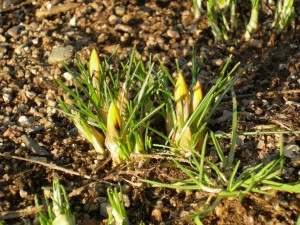 Well, it has been 2-3 weeks since I have been “back home again” – and greeted with spring in Canada. Much of the experience of being in Nepal is still with me. I continue to stay in touch with several of the Nepali people I worked with – as well as some of the international volunteers. And – I am continuing to tie up some loose ends from my work there.
Well, it has been 2-3 weeks since I have been “back home again” – and greeted with spring in Canada. Much of the experience of being in Nepal is still with me. I continue to stay in touch with several of the Nepali people I worked with – as well as some of the international volunteers. And – I am continuing to tie up some loose ends from my work there.
In conclusion – the Leave for Change program seems to be a highly effective program that provides specific expertise in targeted areas of need for short periods of time. All of the organizations involved are focused on the short-term nature of each assignment, and I feel this is critical to accomplishing the stated goals within this short period. All of the organizations were a pleasure to work with.
Who knows – maybe it will be you next time!
Signing off for now …
Greg
Electricity


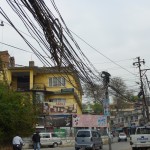 Well – no discussion of life here would be complete without a brief mention of electricity. Life revolves around electricity here – or perhaps the frequent lack of it. For various reasons – there is a shortage of electrical generation in Nepal – with the result that the biggest user of electricity (e.g. Kathmandu) has a “load-shedding”, “power-shedding” or “power cut” schedule that changes daily.
Well – no discussion of life here would be complete without a brief mention of electricity. Life revolves around electricity here – or perhaps the frequent lack of it. For various reasons – there is a shortage of electrical generation in Nepal – with the result that the biggest user of electricity (e.g. Kathmandu) has a “load-shedding”, “power-shedding” or “power cut” schedule that changes daily.
For example, according to my well-worn printed copy of the “Power Cut Schedule” (which is hard to read in the dark…) – today we did not have electricity from 4 to 11 AM, and then again from 4 to 11 PM. The hours of daylight here currently run from 5:45 AM to 6:30 PM. So – if you compare these two schedules – you can see we spend a lot of our evenings in the dark. And – there is a different schedule every day – so tomorrow we will not have power from 2-9 AM and then again from 3-10 PM. To add to the confusion – there are different power-shedding zones in the city – and I work in one zone – and live in another. It takes a while to get used to – and I will let you know when I do.
So – we all spend a lot of time focused on recharging batteries – for laptop computers, cameras, cell phones, portable lights, etc.
Another intersting part of electricity here – is the power lines that run everywhere. I think I can see why there is shortage of copper elsewhere in the world…
“The top of the world”
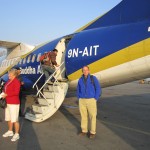

 Yes – “the top of the world” is what we often think about when we think of Nepal – or more specifically – “Mount Everest” – the tallest point of land on our planet. Clearly, the limits on my time and work activity here do not allow for the typical 13 day “Everest Base Camp Trek” that is required to get there (assuming of course that I am even able!). But there is a “Plan B” approach – and that is the early morning “Mountain Flight” from the Kathmandu airport that takes a quick one-hour “fly-by” of the mountain range – pointing out several of the tallest mountains in the world that occur here.
Yes – “the top of the world” is what we often think about when we think of Nepal – or more specifically – “Mount Everest” – the tallest point of land on our planet. Clearly, the limits on my time and work activity here do not allow for the typical 13 day “Everest Base Camp Trek” that is required to get there (assuming of course that I am even able!). But there is a “Plan B” approach – and that is the early morning “Mountain Flight” from the Kathmandu airport that takes a quick one-hour “fly-by” of the mountain range – pointing out several of the tallest mountains in the world that occur here.
So – there we were – up bright and early at 4 AM – to the airport by 5 AM – and after some rather confusing line-ups, ticket sales, tax payments, pat-downs, another pat-down, and then a third pat-down – we were on the “Buddha Air” plane – and eventually rolling down the airstrip into Nepali airspace – by 8.15 AM or so.
A short but wonderful flight; the pictures speak for themselves….
Holi
Celebrating the Holi festival
The Holi festival was on last Saturday – and even though we were warned about the possible consequences – we went anyway – wearing some nonessential clothes…As the CNN website says… “Holi is regarded as one of the greatest festivals, as important as Dashain and Tihar or Dipawali. Since more than 80% of people in Nepal are Hindus, Holi, along with many other Hindu festivals, is celebrated in Nepal as a national festival and almost everyone celebrates it regardless of their religion, e.g., even Muslims celebrate it. Christians may also join in, although since Holi falls during Lent, many would not join in the festivities. The day of Holi is also a national holiday in Nepal.”
“During Holi, people walk down their neighbourhoods to celebrate Holi by exchanging colours and spraying coloured water on one another. A popular activity is the throwing of water balloons at one another, sometimes called lola (meaning water balloon). Also a lot of people mix bhang in their drinks and food, as also done during Shivaratri. It is believed that the combination of different colours played at this festival take all the sorrow away and make life itself more colourful.”
In other words – everyone runs around throwing bags of colored water – or even more popular in the main Thamel district of Kathmandu – is that everyone walks around with handfuls of dry colorful pigments – and come up to you and smear it over your face, etc. Thousands of people are so colored – and this picture is just one group standing around during the middle (muddle?) of the day.
And – for the chronically curious among you – yes – it all washes off easily with a bit of soap and water …
(Remember to click on the photo for the full image)
(http://ireport.cnn.com/docs/DOC-575565?ref=feeds%2Flatest)
Farming is a family business


 Farming is a family business in Nepal. These pictures show an individual terrace where cauliflower is being grown. These plants were initially grown as seedlings and then transplanted into the soil that was tilled by hand and hoe – and/or plowed by water buffalo. The bags that are scattered through this field contain fertilizer or compost, and each plant is individually treated by hand with both. Watering is also done by hand – and buckets of water are collected from a nearby stream, carried to the terrace, and then ladled onto individual plants as required.
Farming is a family business in Nepal. These pictures show an individual terrace where cauliflower is being grown. These plants were initially grown as seedlings and then transplanted into the soil that was tilled by hand and hoe – and/or plowed by water buffalo. The bags that are scattered through this field contain fertilizer or compost, and each plant is individually treated by hand with both. Watering is also done by hand – and buckets of water are collected from a nearby stream, carried to the terrace, and then ladled onto individual plants as required.
The mother and father are doing most of the field work, whereas the daughter is hand-harvesting various types of forage from the edges of the terraces, and will carry these back to the familiy home in her basket for feeding to the farm animals. Farm animals may include combinations of chickens, goats, water buffalo, cows or pigs. The specific animals present at each farm varies according to the type of farming they do, their family culture, and their religion.
You can see the drainage ditches that run through the terrace – mostly to drain away excess water during the rainy season. This is one of the more progressive farming families in the valley, and the father had completed a 5 month course in integrated pest management of cole crops.
“Hill farming” in Nepal


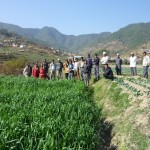
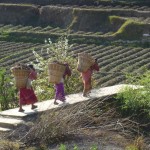
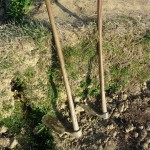
 We spent two days visiting the Bajrabaraha Village District Committee (VDC) in the Makawanpur district of Nepal. This is an area of “hill farming” about 1-1.5 hours outside Kathmandu – “as the crow flies”. However, it took us 4-5 hours to get here “as the jeep drives” – over rough roads, up and down, and in and around the mountains.
We spent two days visiting the Bajrabaraha Village District Committee (VDC) in the Makawanpur district of Nepal. This is an area of “hill farming” about 1-1.5 hours outside Kathmandu – “as the crow flies”. However, it took us 4-5 hours to get here “as the jeep drives” – over rough roads, up and down, and in and around the mountains.
The scenery is magnificant. The “hills” are actually small mountains – ranging up to 2500 m in height. The mountains have quite steep sides – allowing for wonderful views of the scenery as one drives along. However, looking down can be a litle intimidating at times – especailly when your jeep has to pass a speeding bus going the other way – on a single lane dirt road – on a hair-pin turn – while going over a bridge – with everyone honking their horns continuously; which was a fairly regular occurrence…
Much, or even most, of the sides of these hills are farmed. The farmers live in family and small village units along the roads. All of the land is farmed as layered terraces that have been hand-dug over many years – and constantly maintained. There are hundreds of thousands of them – everywhere. The terraces are maintained with a relatively large, heavy “hoe” and the terraces are hand-plowed using water buffalo. All seeds, fertilizers, composts, water, etc., are carried to the terraces – usually in baskets – and usually by women.
We visited at the tail-end of the winter cropping season and many of the terraces were “between crops” or had just been planted with potatoes. The main crops that were still present within the fields included cauliflower, cabbage, raddish and oilseed Brassica (e.g. cole crops). Smaller plots of onions, leafy spices, and wheat were also being grown on some farms.
We spent much of our time in meetings with members of the local cooperative, and then one afternoon walking around parts of the valley – talking with various farmers about disease and pest problems – and what methods they were using to manage them.
Off to work

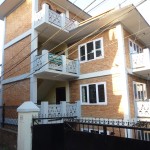
 Of course, the main reason I am here is to go to work – so off to work I go from Sunday to Friday each week (yes, that’s six days per week). To get to work – I need to travel from the northeastern side of the city of Kathmandu to the central region of the adjacent city of Patan. In the morning I use a “tuk tuk” or “tempo” (Photo 1) – where I typically ride along with 8-12 others for 40-45 minutes – and all for the modest price of approx. 25 cents. The tuk tuk is an interesting vehicle – its main merit is that it is 100% electrically powered by a series of 12 car-sized batteries – and therefore makes an enormous contribution to reduced pollution in the city. On the other hand – “part of me” gets the impression that they might also benefit from some shock absorbers!
Of course, the main reason I am here is to go to work – so off to work I go from Sunday to Friday each week (yes, that’s six days per week). To get to work – I need to travel from the northeastern side of the city of Kathmandu to the central region of the adjacent city of Patan. In the morning I use a “tuk tuk” or “tempo” (Photo 1) – where I typically ride along with 8-12 others for 40-45 minutes – and all for the modest price of approx. 25 cents. The tuk tuk is an interesting vehicle – its main merit is that it is 100% electrically powered by a series of 12 car-sized batteries – and therefore makes an enormous contribution to reduced pollution in the city. On the other hand – “part of me” gets the impression that they might also benefit from some shock absorbers!
I work at the National Agriculture Cooperative Central Federation Limited (NACCFL) (Photo 2) which is the umbrella organization of the Small Farmers Agro Cooperative Limited (SFACL). “Small farmers” in this context refers to farmers with very small landholdings (rented or owned) of typically 0.5 acre in size, and with annual income below the poverty threshold. Various definitions of this poverty threshold exist but – in round numbers – this would be less than $0.75 per day income. Humbling indeed.
Most of these cooperatives are located in villages well outside of Kathmandu – and travel to visit them is apparently slow – mostly due to poor roads and high traffic. Many of the villages are in the southern terai (grassland) regions – which are semi-tropical to tropical – and where much of the better agricultural land is located (about 6 hours drive from Kathmandu).
The SFACL is a truly cooperative organization that is fully owned and managed by the local community. Within each village – 3 to 14 families comprise an individual cooperative – and these are then organized into larger regional and district groups – with members from each cooperative responsible for managing the larger groups. In 2010, the collective membership includes more than 200,000 members. The NACCFL and SFACL provide a range of financial and nonfinancial services for its members – ranging from microfinance loans to plant and livestock health programs. For example – two other Canadian volunteers here include Amy – who is training people in statistical software for a microfinance agency – and Claire – who is a veterinarian helping with animal herd health.
For the first few days I have mainly been involved with meeting everyone, discussions and planning on what and how to proceed during my short time here – and a lot of reading on the NACCFL and SFACL, crops and crop problems that occur here, previous projects and initiatives that have already been completed, etc. Nepal clearly has an established and active plant health program already but are very understaffed – and small farmers tend to be underserviced.
Apparently, we will be heading out to the villages later this week for some farm visits and discussions…
At the end of each day – I take a bus home (Photo 3).
Kathmandu site/sight-seeing



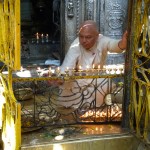

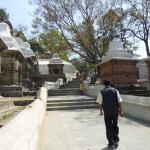
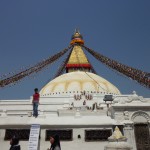
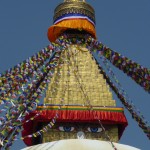
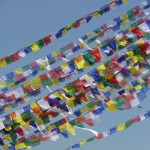
Photos 1-3. As the guidebook says “The Kathmandu Durbar Square holds the palaces of the Malla and Shah kings who ruled over the city. Along with these palaces, the square also surrounds quadrangles revealing courtyards and temples.” Perhaps more simply: “temples, temples, more temples and then even more temples” – all within an area of 2-3 blocks. The initial construction of the place is thought to date back to the 10-11th centuries – but the temples are considered more modern – dating back to the 15-16th centuries. The construction of the various buildings reflects the evolution of various dynasties and rulers – their and favored gods and goddesses over time.
Photos 4-6. The crematorium is a rather sombre but important place within the city – located along the river. A wide variety of goods are for sale by numerous street merchants along the path – including the stands of brightly-colored pigments (e.g. Colors). At the end of this path is a large building that stretches along the river – with 4-10 funeral fires burning under canopies at any one time – with families tending to the fires and the ashes (no pictures – out of respect). Extensive grounds, stairs and related structures are present at this site.
Photos 7-9. The Great Stupa of Boudhanath presents a complete contrast to the crematorium. As one walks down another street and turns the corner – one is immediately accosted by a great white done, with two large eyes, and thousands of colorful prayer flags fluttering in the wind. This one of the holiest Buddhist sites in Kathmandu, one of the largest in the world, and is a UNESCO World Heritage Site. The Stupa is on the ancient trade route from Tibet which enters the Kathmandu valley. Tibetan merchants have rested and offered prayers here for many centuries. The Stupa is said to entomb the remains of Kassapa Buddha, the third of the five Buddhas of the “Fortunate Aeon” (you can google for more info).
Orientation …
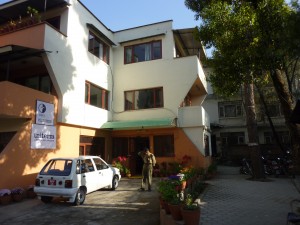
The sounds of barking dogs, crows, motorcycles, temple bells, and braying cattle help wake me each morning. Our agenda for the first two days in Kathmandu was an official orientation from our sponsor agencies at the CECI offices (left side of photo) which are located in the same compound as our accommodations in Passage House (right side of photo). A full day of meetings, including a surprise visit from the regional CIDA representative. Everyone is very organized and helpful. The next day started with a full medical interview and orientation, and then a quick tour of three sites around the city; the Kathmandu Durbar Square, the Kathmandu Crematorium, and the Great Stupa of Boudthanath (pictures will follow soon).
(Note: you can click on images within the blog to get the full image).
The trip …
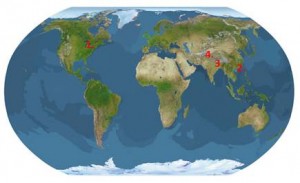
The trip ...
So, how does one get to Nepal? Well – I left Toronto (#1 on map) at 1:30 AM on 5 March on Cathay Pacific – and flew to Hong Kong (#2 on map; 15 hours, approx. 12,500 km) – and then had an 11 hour layover. I met up with Amy – a fellow volunteer coming from Vancouver – in the airport in Hong Kong. Next we took a Cathay Pacific flight from Hong Kong to Dacca, Bangladesh (# 3 on map; 4.5 hours, approx. 2,400 km) and then took the final flight into Kathmandu, Nepal (#4 on map; 1.5 hours, approx. 675 km). So – all totalled – the flights covered approx. 15,575 km and took 37 hours. We were met at the airport by Shashi – our friendly agency driver – and delivered to our accommodation – where I promptly fell into bed and asleep!
Day 2
Slept almost ten hours last night! Feeling fresh this morning and lovin’ taking my time. Went for breakfast at 8 thinking it was going to be laid out… another false expectation. A young man walked me to the dining area and gave me the options – eggs, fried, eggs, scrambled, eggs, omellette, sausage, bread, white. OK, omellette and white bread it is. So much for the market fresh fruits and yogurts I had on my mind. And surprise of all surprises, some powder Nescafe makes so called real coffee or something crass like that. The north makes great coffee, so why isn’t it used here.
My omellette wasn’t bad and the toast filled me up, but I grabbed juice, apples, yogurt, cheese at the supermarket today. The highlight was my conversation with Agostino. He is a 23 year old Malawian who lost both parents to illness, and supports his younger brother and a grandmother who raised him. He is charming and a very practical young man.
The morning at WUSC was worth it just to meet the folks there. Content wasn’t very engaging – seen and heard it all before, but like all Malawians so far, they were friendly and helpful. Went out chauffeured by Phalys again who took his to change money, buy a phone and hit the supermarket. I came home to get myself settled. Tomorrow I will meet Charles with Alice who will be the go between.
Put in an order for dinner, fried chicken and rice and it came with green beans. Yummy! Drank some of the SA white I bought at duty free in SA, worked out my cell phone, and chillaxin in the room. Turns out I am 1 of only 2 guests at the lodge right now and she’s going in a couple of days. Chickombi took me to meet her and we had a brief chat. Don’t expect it will grow into a meaningful friendship, but got some good tips re. travel to Lake Malawi. Could be a lonely existence for the next while.
I meet the client tomorrow – Alice will introduce us. I will find out who my contact is, then downtown to meet Roy and Billi – 2 others!
Leaving Accra
Sitting in the lounge in the Amsterdam Airport, I am still groggy from the overnight flight, not quite long enough to get a good night’s sleep but long enough and late enough to engender traveller’s disassociation, that strange, not-quite-fully conscious state where everything is seen through a lens of fatigue and yawns come unbidden in an attempt to find sufficient oxygen after airplane air.
The waning days of my sojourn in Ghana were eccentric and confused. I couldn’t get my departure date clear in my mind and kept telling everyone – the Child’s Rights folks, WUSC, Suma and my friends – that I was leaving Friday. I wasn’t; Saturday had always been d-day. The funny thing is that this confusion wasn’t some weird subconscious desire to leave early. Rather, it really was more about not yet being ready to leave.
There is a tradition, in Accra, amongst the WUSC volunteers that, prior to returning home, a volunteer’s WUSC friends and colleagues gather for a farewell dinner at Suma Court, as if to close the circle that begins when the tired excited curious nervous new volunteer steps off the plane and into the embrace of Suma Court. Juliana and I conferred about the menu, how best to accommodate various likes and dislikes and a vegetarian. We had chicken, fried plantains (my favourite: any day with fried plantains is a good day), jollof rice, red and spicy, and the most exquisite spaghetti (not something I expected to find in Africa), and french fries (comfort food for Canadians here for a long time). There are bottles of Stone beer and then, the real surprise: strawberry ice cream.
I wonder about departures, about saying good bye, about promising to return.... and I do promise. When the time comes all the Suma denizens gather in front. Nicholas runs up to me and I carry him outside (can that really be me with a two-year old clinging to her?) Hugs all around,.... even Peace and Daniel hug me and Juliana and I hug like sisters. Patrick is there with his taxi, the really new one, and the bags are loaded. Somehow, I still have all the suitcases and yet one more package, as well. And as we leave the Suma courtyard everyone waves until the taxi turns out of sight. Patrick comes into the airport with me just on the off chance that I cannot finesse my oversized, bizarrely wrapped (in a tightly tapped, psychedelic purple bag) onto the plane. But the amazingly accommodating attitude of Ghanians continues through the KLM check-in and right through security. No one seems to think my purple plastic bag is the least bit unusual. (It contains two old carved window shutters for traditional huts, one from Mali, one from Burkina Faso. They would be closed during times of war and are carved with warriors and other figures including rats, that would protect the inhabitants of the huts. They speak to me in a way that souvenirs cannot).
So, leaving Accra is decidedly different from arriving. Anticipation has been replaced by wistfulness. I am so pleased to have made a contribution to the work of Child’s Rights International but I am definitely not ready to leave Ghana. Here in Amsterdam airport, in this artificial liminal environment, time and place do not exist, and it is thus that slowly, slowly my shoes turn and like a compass needle finding to true north, start to point towards home....
City of Walls
Initially, Accra appears to be a walled city. There are walls everywhere, keeping something out or keeping something in, guarding, hiding, protecting, sheltering. There are tall walls and small walls, sturdy walls, impregnable fortress walls, mud walls, brick walls, cement walls, wooden walls, walls of leaves. There are smug walls, painted soft pastels of yellow and green and pink. There are walls with lovingly wrought iron gates proudly sporting gilded finials of faux gold. There are shabby walls, nothing more that sheets of corrugated iron propped up, standing against the odds, the gate no more than one iron sheet loose enough to pull back and squeeze through. Not unusually these spectacularly different walls stand side by side: for the most part, rich and poor are not separated in Accra’s urban geography, impoverished Christian Village, privileged Achimota and the egregious embassy enclave notwithstanding.
Relying on neither sheer height nor great width, many walls sport nasty dangerous toppers which, in the right light can twinkle like tinsel, outlining the shape of the land they bind. Some are familiar – pointed bricks or broken glass and bottles. Other bristle brutally: barbed wire and electrified wire are prominent. Increasing popular, too, is razor wire, inexplicably favoured by the ubiquitous evangelical non-denominational, conspicuously wealthy churches that serve the poor. Razor wire is a more recent innovation, mandated to surround the dwelling of every employee of the US Embassy, rendering these overly cautious Americans visible to all: vandals, kidnappers or terrorists alike. In Accra’s ongoing Were’s Waldo, in which direction signs, street names and addresses are all eschewed, these razor wire bedecked walls are as effective as searchlights to identify their American inhabitants.
These walls of protection are easily comprehensible but what of the flimsy walls, the walls to low to even cause a tumbling Humpty to break? Walls that are propped up. Walls without any gates at all, wide openings that invite in the world. There are pristine walls and walls that serve as billboards. There are, among the hundreds and thousands of walls, a few with spray-painted messages that at last hold the key to understand the walls, especially that do not enclose or protect. The painted messages: “Family owned land.” “Land not for sale.” “Stop work. Produce permit.” “Remove immediately by order.”
Land ownership in Ghana is not clear. Title offices, deeds, registered mortgages are for the most part inefficient, inconsistent or nonexistent. One of the only ways to prove and enforce ownership is to erect a wall and literally defend it: “Keep off. Family land. Not for sale.” What happens is that unscrupulous people pretend ownership of a parcel of land that does not belong to them and sells it to someone who thinks it is a legitimate sale, but of course it isn’t. But who knows? And when does a person find out that the dream plot of land they have saved their whole life to purchase is not theirs at all and they have been defrauded. This is also why people start to build even the most rickety partial structures: to prove the land is occupied.
Building reveals the astonishing disparity between new Ghana and old. There is an enormous, multi-story Novatel dominating the skyline hitherto limited to about 3-5 stories. And the churches, these are the other big construction projects, immense, elaborate, with detailing, columns, cornices and balconies. They stand in stark contrast to the surrounding neighbourhood echoing the same dissonance that characterized medieval town and medieval cathedral, absent only the gargoyles. But large or small, multinational or evangelical, commercial or domestic, there is one thing that unites in Accra: they are all made of cement, poured cement, moulded cement or towering stacks of cement blocks held together with cement. The roads are lined with cement brick works, where the workers make standard rectangular cement blocks, or coloured decorative blocks, all by hand. Vendors show varied styles and sizes of decorative columns to grace the entrance or hold up the ceiling.
Construction sites dot the roads as owners rush to build some structure that will reify their claim to the plot of land. Workplace safety standards appear to be unknown: the workers don’t wear hard hats; one assumes that steel-toed boots are equally absent. But absent also are safety harnesses as the construction workers stand of frail wooden scaffolding, devoid of railings, presumably too unstable to support a worker in full safety gear. The drop might only be a storey or three and the ground is soft but how many construction workers and cement workers are injured, disabled, killed every year? Occasionally, the walls of the construction sites bear a spray-painted notice “Stop work immediately. Produce permit.” This is how the building inspectors try to impose order on an essentially uncontrolled and uncontrollable industry. There are too few inspectors to return to a site where there is never anyone really in charge or responsible, so they leave their calling card. Wily owners and construction crews, however, not infrequently paint these signs themselves, to trick inspectors into thinking a colleague has already put the site on notice.
If construction sites dot the landscape so, too, do the skeletons of half built structures. Sometimes it seems possible to read the ebb and flow of Ghana’s economy by the age of the building and when construction stopped. This may be fantasy but certainly when the owner runs out of money construction does stop, only to resume when there are again sufficient cedis for a roof or another storey or the external stucco and painting. Suma Court has been under construction for 20 years and there are still plans for additional rooms and amenities as funds become available. It gives one pause the consider that no one in Ghana has a mortgage: but with interest rates having just gone down to 24.9% perhaps therein lies explanation. Certainly, though, some of the skeletons are the result of downward mobility. Across from the WUSC office is a house, grand and walled and crumbling. The window glass is broken or gone completely and an enormous satellite dish, surely the size of the whole roof, has fallen. But even in these hard circumstances, the owner is seeking to enforce his rights; spray painted on a vendor’s booth that has tried to encroach on his wall space is a notice to remove immediately.
So, the booths of the vendors huddle under the walls of the wealthy (though not in the embassy enclave which could blend into Rosedale or Shaughnessy or any similar neighbourhood) who become all the more wealthy for the presence of the vendors who rent their squalid square of boulevard from those behind the walls. The vendors, dependent though they are for their land, are nevertheless independent merchants; they not only own their skills and stock but also their shop that rest on the land of the bourgeoisie.There is something in all this that compels the language of Marx, a radical call to social justice: workers of the world unite; you have nothing to lose but your chains. Except some of the poorest vendors and the hawkers don’t even have their own chains, no doubt melted down with the global economy.


